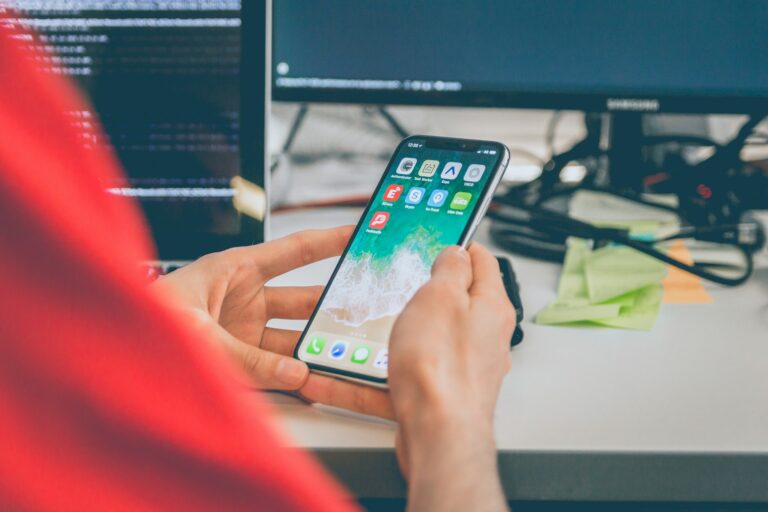If you were hoping to build an app without encountering various bugs and errors, think again. Between human error and technical malfunctions, there’s an endless list of things that can go wrong throughout the mobile app development stage.
Human error is inevitable. It’s a part of our blueprint and, quite frankly, a part of what makes us human, to begin with. If you want your app to be successful from the moment it’s released, it’s essential those bugs and errors get resolved before users have a chance to see them.
The only way this is possible is with quality assurance and testing being done simultaneously throughout the development of the mobile app.
What are the benefits of testing your app before its release?
With testing, any defects with your mobile app will be detected early enough to find a solution and have it taken care of. While that may seem like an easy process, there’s a lot to consider when it comes to testing your mobile app.
Let’s take a look at the major benefits you receive with proper testing and quality assurance:
- Confirming the app functions as intended on different devices and infrastructures
- Ensuring the app incorporates UI/UX design that your audience will enjoy
- Testing the look and feel of the app, as well as the navigation
- Better app performance will result in a higher percentage of users keeping the app once downloaded
- Save time and money when building your mobile app
Testing and quality assurance will ensure your app is ready to be downloaded and enjoyed by users across the globe. Otherwise, you’ll be stuck with a long list of maintenance to perform before users can open your app again — and that won’t help customer loyalty at all.
Do all mobile app developers offer testing and quality assurance?
One of the biggest mistakes made when searching for a mobile app developer is neglecting to confirm they offer testing and quality assurance. Believe it or not, many developers will skip this step in order to save time and move on to their next project.
To make matters worse, you likely won’t find out until your app is ready to be launched — just to find out it’s not really ready to launch. This can be extremely frustrating after all the time and money spent on the project.
In order to avoid this happening to you, it’s essential to demand your developer perform testing and quality assurance throughout the development stage. If they decline, find a developer that will meet your standards. Your project could very well depend on it.
How are mobile apps tested for quality assurance?
Since quality assurance is fully-designed to ensure the best user experience possible, it’s imperative to put yourself in the user’s shoes.
When your development team tests your mobile app, they will do so on various different devices, screen sizes, operating systems, battery percentages, network connections, and much more. This will give you the most accurate depiction of how your mobile app will perform for each user that downloads it.
Essentially, your developers will utilize three different methods of testing and quality assurance: real devices, simulators, and emulators. Let’s take a closer look at each of these methods and how they benefit the testing process:
- Real Devices – performing quality assurance on a real device will yield the most accurate test results because it will be done by a human in real-time. It will give you the ability to test your app in certain conditions (low battery, incoming call, etc.), but will take more time and money to complete.
- Simulators – mainly used for iOS devices, simulators allow you to test your app in certain environments. While it won’t be an exact replica of a real device and won’t be as accurate, simulators are a cost-effective option when testing certain functions of your app. Once the desired outcome is reached, you can test the finished product with a real device.
- Emulators – using binary translation, emulators will translate the Instruction Set Architecture of the device to that of the computer. This allows you to test an exact replica of a real device, giving you more accurate results than a simulator. Emulators are generally used with Android devices.
With the use of these three methods, your developer can effectively check every aspect of your mobile app. Keep in mind, being able to think like the user will allow you to create a mobile app that users enjoy.
What are the different types of mobile app testing?
Much like there are different methods of testing, there will be different types of mobile app testing. Each type of testing will focus on a different aspect of your app. You’ll want to take each type seriously because there isn’t one type of testing that’s more important than the other.
Let’s see what the different types of testing are and why they’re important to the success of your mobile app:
- Functionality Testing – ensuring the app can successfully be installed by the user and confirming that it can handle different interruptions, updates, and other conditions.
- Performance Testing – seeing how well your app responds to requests, how quickly it loads, how well it handles increased loads, stability over time, and increased volume of users at once.
- Usability Testing – this is where you’ll take a look at the various functions and the experience the user will get from the app. You’ll be testing the layout, colors, text, navigation, and ability to return to an app after closing it without having anything erased.
- Compatibility Testing – to ensure your app is compatible with different operating systems, devices, and more, you’ll need to have compatibility testing done on your app. It’ll even look at database and network compatibility!
- Security Testing – there are two things to take into account here, the security of your users and the security of your own data. Security testing will limit the threat of breaches and data theft from unwanted visitors.
- Localization Testing – if you want to offer your mobile app in different languages and make it available to different cultures, localization testing will ensure your app is properly set up to support that.
By the time your developers are finished with the testing process, you’ll have an app that’s ready for its first download! All you’ll have to do is get your app posted in the app store and start marketing it!
If you have an idea for a mobile app that you think users would enjoy, contact us today because we want to help! We’ll bring your vision to life with our expert team of professionals — from the brainstorming stage all the way through the testing stage.
Photo by Marvin Meyer on Unsplash



